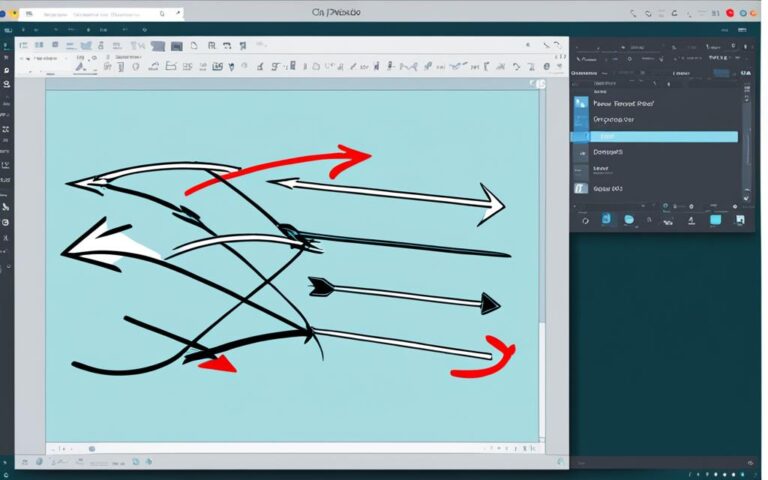Ejection fraction (EF) tells us how well the heart pumps blood. It shows the blood volume pushed out by the heart’s ventricles with each beat, as seen in data1. This measure is crucial for understanding heart health and spotting problems like heart failure.
For a healthy person, the EF is usually between 50% and 70%, research says1. There are different types of EF, such as the left ventricular (LVEF) and the right ventricular (RVEF). They give details on how well various parts of the heart are working.
To figure out the EF, you use the formula: EF = (SV/EDV) × 100. Here, SV is the stroke volume, and EDV is the end-diastolic volume1. By doing this calculation, we get the EF percentage.
A low EF means the heart isn’t pumping well. This could lead to heart failure, various statistics show1.
Key Takeaways
- Ejection fraction (EF) measures the heart’s ability to pump blood.
- The normal ejection fraction range is 50% to 70% in healthy individuals.
- Different types of ejection fractions, such as LVEF and RVEF, assess specific aspects of heart function.
- The formula for computing ejection fraction is EF = (SV/EDV) × 100, where SV is stroke volume and EDV is end-diastolic volume.
- A low ejection fraction can indicate a potential risk for heart failure.
Assessing Ejection Fraction
There are various methods to assess ejection fraction, both qualitatively and quantitatively.
Qualitative approaches judge the left ventricular walls and the mitral valve by sight. This method is fast for checking the heart’s pumping function2. If these parts move oddly, it might mean the ejection fraction is low.
Measuring the E-Point Septal Separation (EPSS) is another visual method. EPSS measures the gap between the mitral valve leaflet and the septum during heart filling2. A bigger gap suggests a weaker heart pump.
Quantitative methods give exact numbers. One way is by calculating fractional shortening, which shows the heart’s diameter change during beats. Normal rates are 25-43% for men and 27-45% for women2. This gives a precise ejection fraction but remember, its accuracy depends on the user.
Importance of Ejection Fraction
Ejection fraction (EF) is a key way to check heart health3. It shows how well the heart pumps blood. This info helps doctors decide on the best treatment.
When ejection fraction is low, it means the heart can’t pump blood well3. This can lead to tiredness, breathlessness, and swelling in the legs or belly34.
Heart attacks, cardiomyopathy, and valvular disease can cause a low EF3. Treatment might include medicines, lifestyle adjustments, and sometimes devices or surgery.
Checking EF often is vital to see if treatments work5. Tests like echocardiograms and cardiac catheterization give accurate measurements. Keeping in touch with your doctor is key for good heart failure management5.
FAQ
What is ejection fraction and why is it important?
A: Ejection fraction (EF) is a key heart metric. It shows the percentage of blood the heart pumps out with each beat. A healthy heart’s EF ranges from 50% to 70%. EF matters because it indicates heart performance. It can pinpoint heart failure.
How is ejection fraction calculated?
To find the ejection fraction, divide the stroke volume (SV) by the end-diastolic volume (EDV). Then multiply by 100. This calculation gives the ejection fraction percentage.
What are the different types of ejection fractions?
Ejection fractions vary, such as the left ventricular ejection fraction (LVEF) and right ventricular ejection fraction (RVEF). These help check the heart’s left and right sides.
How is ejection fraction assessed?
Assessing EF involves both looking and measuring. Doctors visually check the heart’s movement and use tests like the E-Point Septal Separation (EPSS). They also measure changes in heart size from start to finish of a heartbeat.
What role does ejection fraction play in diagnosing and managing heart failure?
EF is vital in heart failure management. Low EF hints at heart failure. It impacts treatment choice. Low EF causes symptoms like breathlessness and swelling. Tracking EF helps judge treatment success and monitor heart changes.
What are the treatment options for heart failure?
Heart failure treatments range from medicines to lifestyle tweaks, rehab, devices, or surgery. Treatments depend on how much EF is reduced and the cause of heart failure.
What conditions can cause a reduced ejection fraction?
Reduced EF can result from issues like cardiomyopathy or heart valve disease. Other causes include diabetes, high blood pressure, and coronary artery disease. Treating these conditions is key to improving EF.
Source Links
- https://ecgwaves.com/topic/ejection-fraction-ef-physiology-measurement-echocardiography/ – Ejection fraction (EF): Physiology, Measurement & Clinical Evaluation – Cardiovascular Education
- https://www.pocus101.com/assessing-left-ventricular-ejection-fraction-with-echocardiography/ – Assessing Left Ventricular Ejection Fraction With Echocardiography – POCUS 101
- https://www.webmd.com/heart/ejection-fraction-percentage-meaning – Ejection Fraction
- https://www.verywellhealth.com/ejection-fraction-1746036 – The Left Ventricular Ejection Fraction
- https://www.heart.org/en/health-topics/heart-failure/diagnosing-heart-failure/ejection-fraction-heart-failure-measurement – Ejection Fraction Heart Failure Measurement


















